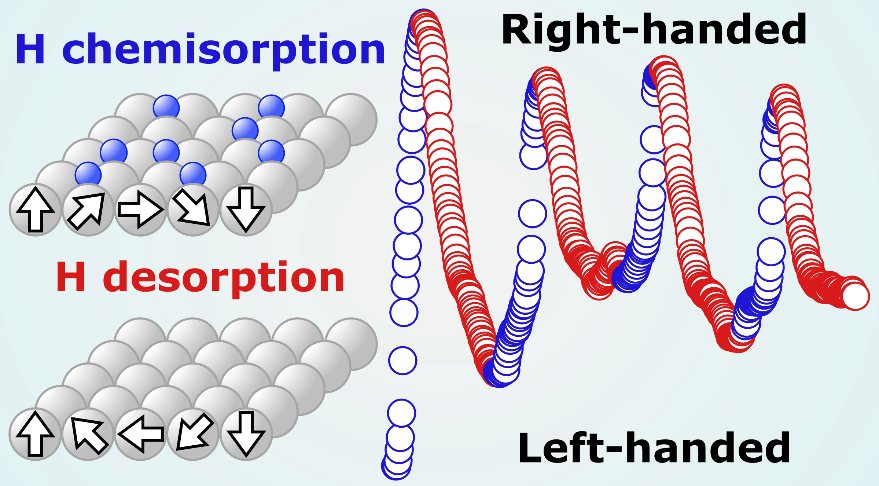Atomic layer of hydrogen adds a new twist to nanomagnets
In this work just published in PRX, Dr. Gong Chen, Prof. Kai Liu and their team report a fundamentally new way to induce the Dzyaloshinskii-Moriya interaction (DMI), a handle to introduce topology into real-space magnetic configurations.
Chiral magnets have the potential to act as energy-efficient information carriers. In a chiral magnet, the neighboring magnetic moments adopt a winding arrangement, as opposed to the linear arrangements seen in ferromagnets and antiferromagnets. In very thin films, this chiral structure arises from an antisymmetric interaction among adjacent spins known as the Dzyaloshinskii-Moriya interaction, or DMI. In this work, the team demonstrates a fundamentally new way to induce the DMI: Adsorption of hydrogen onto a ferromagnetic surface not only instigates the interaction but also allows them to dial its strength up or down on demand, a powerful ability for certain types of magnetic memories and logic devices.
The team detects the role of the DMI on magnetic domain walls, which are boundaries between regions with different magnetic architectures. Using spin-polarized low-energy electron microscopy, they can directly visualize the arrangement of magnetic moments on the domain walls. In each experiment, they can monitor these structures in real time, which allows them to track changes of the DMI via hydrogen adsorption and desorption. They are also able to quantify hydrogen-triggered changes in the system’s work function, which match the hydrogen-induced switching of the magnetic chirality.
With hydrogen control of the DMI now demonstrated, they hope to quantify other hydrogen-induced changes to magnetic behavior. These new findings advance the understanding of DMI in materials with low atomic numbers and the design of novel chiral spintronics and magnetoionic devices. Read the paper in PRX: https://journals.aps.org/prx/abstract/10.1103/PhysRevX.11.021015

